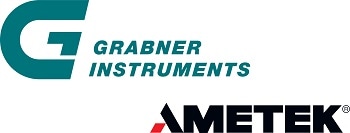MINIFLASH TOUCH is a flash point tester exclusively developed for determining the flashpoints of solids and liquids, using the Grabner flash point detection technique of measuring the immediate pressure rise inside the continuously closed chamber, stimulated by an energy-controlled electric arc. Heating the test chamber from the top prevents condensation of high volatile compounds, thus considerably enhancing the test results.
.png)
Benefits of MINIFLASH TOUCH
With its continuously closed cup design and a small sample volume of just 1–2 mL, maximum safety is provided, offensive fumes are eliminated in the testing area, and the sample waste is decreased. Due to the rapid thermoelectric cooling at the end of a test and because of the quick and easy handling of the instrument, expensive labor time is saved.
The full-color touch-screen of the MINIFLASH TOUCH operates on Microsoft® Windows® software and incorporates insightful menu navigation that eliminates the need for training for flashpoint testing. Together with its convenient touch screen design, the MINIFLASH TOUCH provides hassle-free communication with Ethernet, USB, PCs, and LIMS; an extensive temperature range from 0 to 400 °C; and almost unlimited storage capacity for programs and results.
The flash point is determined by the MINIFLASH as per ASTM D6450 and the advanced ASTM D7094 standard. This procedure defines the “Standard Test Method for Flash Point by Modified Continuously Closed Cup (MCCCFP),” which provides the highest reproducibility and repeatability and an outstanding correlation to the D93 Pensky-Martens method: “there is no statistically significant bias observed between ASTM D7094 and ASTM D93 Procedure A” as concluded during the last Round Robin. The ASTM committee has approved ASTM D7094 for the Diesel Fuel and Kerosene specifications ASTM D975, D396, D2880, and D3699.
.jpg)
Moreover, test results are comparable to other well-established standards like Abel and TAG. Its exceptional design enables MINIFLASH to be used for more complex applications such as flash point testing of contaminated samples, for example, gasoline in diesel fuel or diesel fuel in lube oil, and for biodiesel testing. The new MINIFLASH TOUCH analyzer also incorporates enhanced techniques for simulation of EN ISO 3679 and EN ISO 3680.
In addition, the true portability and strong housing of the MINIFLASH TOUCH enable it to be the ideal solution for mobile labs and military applications.
The New Technology
Peltier Protection Technology™
Grabner Instruments developed quick thermoelectric regulation of heating and cooling for a fast sample turnaround and increased instrument life span. This technology allows the measuring temperature to be extended beyond 400 °C and improves Peltier performance and lifetime.
.jpg)
Ignition Protection Technology™
Ignition Protection Technology™ is integrated into the MINIFLASH design. Just 1–2 mL of sample is needed for testing the flash point without an open flame. The continuously closed cup design, automatic explosion probing, and a controlled air feed offer protection against fire and unpleasant fumes, for unparalleled safety in flashpoint testing.
.jpg)
Combustion Analysis™
Occasionally, samples consist of small concentrations of flammable compounds, which do not offer an exact flashpoint. MINIFLASH TOUCH identifies even very small flames and graphically displays the occurrence of contaminations in those samples.
.jpg)
Flexibility
Due to its potential to control parameters such as ignition energy, heat rate, and the amount of atmospheric oxygen present in the combustion chamber, almost all flash point methods and environmental conditions can be simulated.
Wide Range of Applications
Flashpoints are determined across a broad temperature range, simulating all standard closed cup methods and also GO/NOGO tests with just 1–2 mL of sample. The programmable fuel dilution curve (diesel fuel or natural gas in lubricating oil) is a great tool used for oil analysis to avoid expensive engine problems. In the past few years, the exceptional performance of MINIFLASH has proven effective for transport regulations/classifications, product specifications, and used oil analysis worldwide.
Other Applications for MINIFLASH
Petrochemistry
- Flash point testing of bitumen, sludge, and residuals
- Quick screening of diesel fuel and jet fuel to check for ultimate presence of low flash contaminants
Advantage: High temperature range and very safe operating procedure
.jpg)
Pharmacy
- Flash point testing of products containing solvents such as glycerol, IPA, ethanol, and so on
Advantage: Small sample volume
Transport
- Flash point testing of flammable goods to check for conformity to transport safety regulations
Advantage: Easy handling.
Flavors and Fragrances
- Flash point testing of aroma products consisting of alcohol-based solvents
Advantage: Small sample volume decreases testing costs considerably in the case of expensive base products
Paints and Varnishes
- Flash point testing of solvent-based varnishes, paints, and enamels for determining the safest means of storage
Advantage: Small sample volume and easy cleaning
Waste Disposal
- Testing of industrial waste such as solids (filter slurry) and unidentified mixtures of liquid hydrocarbons
Advantage: Small sample volume and quick thermoelectric cooling in the case of samples having a flash point well below ambient temperature
Maintenance of Engines, Pumps, and so on
Fuel dilution in lube oils alters its viscosity and thus the lubricating properties of the oil, leading to increased deterioration of mechanical parts because of higher friction, which can ultimately result in severe damage and engine drop-out. Fuel dilution reduces the flash point.

This information has been sourced, reviewed and adapted from materials provided by Grabner Instruments.
For more information on this source, please visit Grabner Instruments.